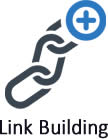
STEP 1 – Website Analysis
For new websites that we create the foundation to start a SEO campaign is included.
If you already have a medical or dental website design, chances are you’re not happy with your SEO results and you don’t need any analysis to tell you that. One of the aspects that many web design companies ignore and overlook is current indexing of a website on Google. Just because your website is not ranking high, it doesn’t always mean that it has no SEO value. We analyze the website ranking on Google to make sure we build on top of established ranking in order not to lose what may have been gained in the past.

STEP 2 – Keyword Research
Every practice is different and so are the keywords and search terms you will want to target to maximize your SEO strategy. We’ll discuss which services are most important to your practice and build the medical or dental SEO strategy around those keywords and search terms.

STEP 3 – On-site Coding
Proper coding on the website is essential to the SEO process. On-site coding includes 3 main phases.
- Website Architecture (Navigation, URL Structure, and Internal Linking)
- Content (Keyword Phrase Targeting and Content Quality)
- HTML & Technical Issues
When a website has proper coding and the search engines are able to crawl and index the site efficiently, it can improve the overall ranking in search results.

STEP 4 – Content Writing
You’ve probably heard it before: “Content is king” Bill Gates made this prediction in 1996 and it’s as true as ever today. Creating a website with readable search engine friendly content is a must. A website needs to have enough content added to cover as many different search terms as possible. When a prospective patient is searching for the services or treatments your practice is offering, the website needs to have enough content target as many different search phrases as possible. For ongoing SEO, medical and dental blogging will substantially increase the content on your website to increase the search terms your practice website shows up for on search.
Our typical medical or dental website design has well over 50 pages. Having more content will increase the overall exposure in the search results and generate more overall traffic.
Here is simple way to understand the importance of content.
If you have a 1-page website with 1000 words on the page, the search engines can only use those 1000 words to match up your website to searches. If you have a 50-page website with 1000 words on each page, now there are 50,000 words.
More Content = More Traffic
More Traffic = More Calls
More Calls = More Revenue

STEP 5 – Website Speed
Googles goal is deliver websites in their search results that will provide a good user experience for the person searching. If your website takes a long time to connect or a long time to load a web page, Google will ignore your website in favor of better performing sites. Not only will Google ignore the slower site, potential and existing patients will also not use the site if its slow.
Our medical and dental websites are optimized for speed to maxime the efforts of any SEO campaign.

STEP 6 – Webiste Optimization
All the pages on the website are optimized with Meta Page Titles and Descriptions, Text Based Navigation Links, Image Coding (Alt Tags), Adding Keyword Phrases, Referencing Geographic Location, Scheme Markup, and Cleaning up the Code to increase website speed.

STEP 7 – Link Building
Increasing the number of website that link to your website will increase the likelihood that your website ranks higher. Each quality link to your website increases the website popularity.
